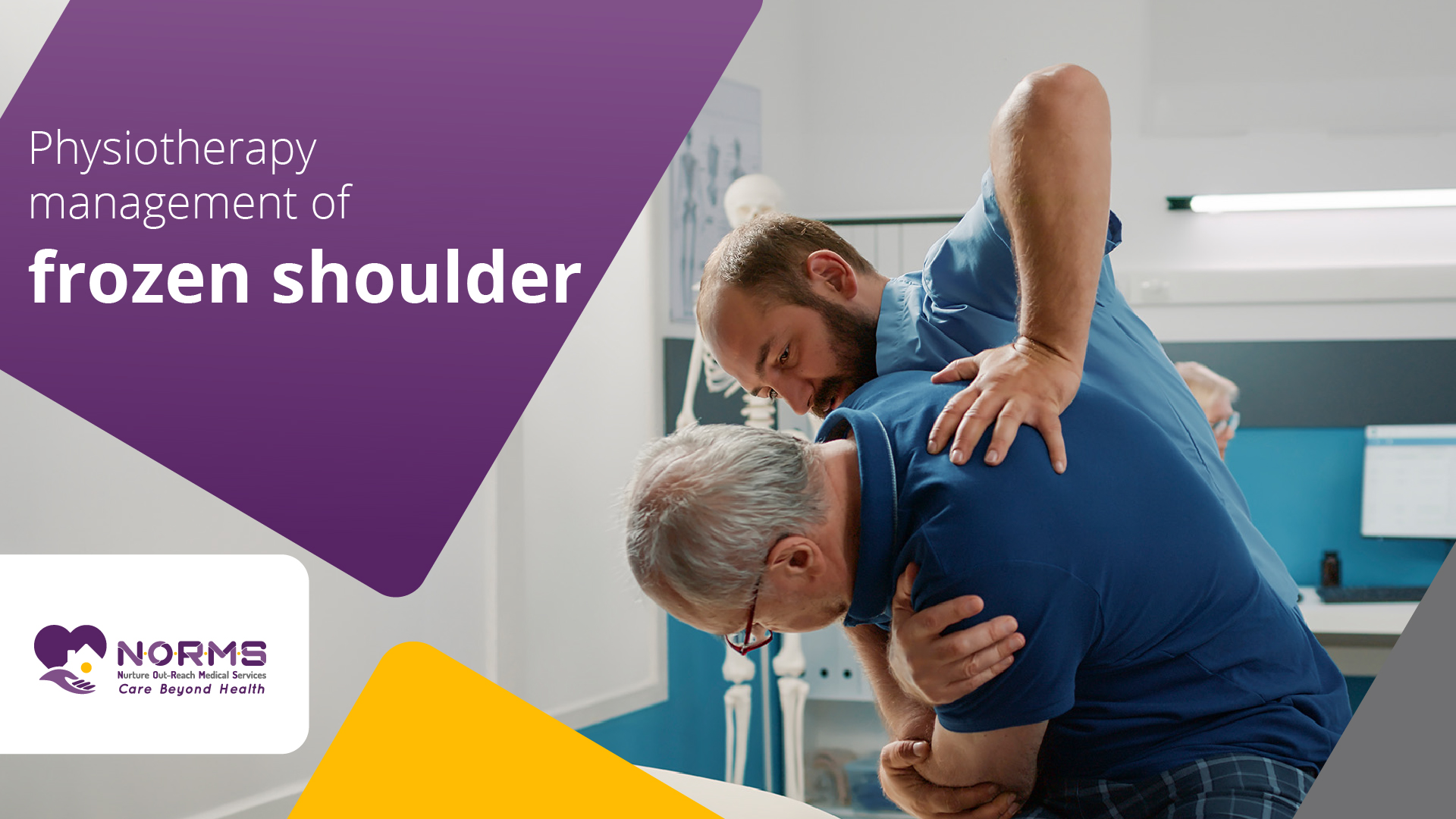
Pain remains less, and bending gradually starts to increase.
This is, however, associated with the reduction of inflammation and easing of discomfort.
Pain is the main sign manifesting itself in the first stages of FS. Physiotherapists employ various techniques to manage pain and inflammation.
Applying ice can assist in tearing and lessen corpulence. Ice can also numb pain in the freezing stage. Heat can be applied to the area in the later stages to stimulate muscle relaxation and increase tissue pliability.
TENS can be a viable method of eliminating pain since it obstructs the pain signals in the body.
Swelling is relieved by gentle joint manipulations and tissue masses, which decrease muscle contraction and increase blood flow.
These management strategies aim to alleviate pain so that patients can manage discomfort; this allows patients to find ways and means of performing the rest of their physiotherapy activities.
Mobility or any other term referring to an increased range of motion in a joint.
A frozen shoulder causes the shoulder joint to stiffen, and as this pathology advances, the joint can virtually become frozen. Physiotherapy for frozen shoulder focuses on gradually restoring mobility through specific exercises.
In the first few weeks, it may be an Active-Assisted Range of Motion (AROM) in which the therapist moves the patient’s arm without the patient’s help. This helps prevent joint stiffness, which may result from Pappenheimer’s disease. Making it an effective technique for physiotherapy for frozen shoulders.
For a shortened term, as pain reduces, patients are taken through AAROM exercise, where the shoulder is actively moved by the patient with the aid of the intact arm or a physiotherapist. Tools like a pulley or a cane can help such movements.
When they move towards the advanced levels of mobilization, gentle stretching of the capsule and muscles of the shoulder joint is incorporated. These should be undertaken to avoid additional stiffness and for flexibility purposes.
Rehabilitation is a long and slow process, and one needs a lot of time and perseverance to go through the whole process. Physiotherapists closely observe performance to ensure that correct techniques are applied and modified in performing the recommended exercises.
Once mobility returns, strengthening exercises are introduced to rebuild muscle strength and support the shoulder joint, making it a crucial step post-physiotherapy for a frozen shoulder.
These are the first kind of strengthening exercises that are covered as part of the training programmes. They are rehabilitation exercises where one has to contract the shoulder muscles without any movement of the joint, and this helps in enhancing strength besides offering protection to the joint.
Since strength increases, resistance bands are used to increase the difficulty of shoulder exercises. Such bands assist in developing certain muscles and also enhance shoulder stability.
The patient is provided with reaching lifting exercises and gradually trained to perform other activities confidently. Shoulder muscles should be exercised for a long time because once injured, one has to spend a lot of time exercising to avoid falling back into the re-injury cycle. The joint has to be strong enough to support the movements through muscles.
The final way is to correct and Prevent misalignment between Commitment and Action. The way of correction and prevention of misalignment between commitment and action is carried out in the following manner: We are desirous of changing and making the corrections as follows. Correction/ prevention of misalignment between commitment and action is as outlined below.
Some factors that may increase the risk of developing a frozen shoulder include a lack of good posture. Poor posture should be avoided as it slows the healing process. Physiotherapists work with patients to improve posture, which can alleviate pressure on the shoulder joint and improve movement patterns.
Good posture is explained to the patients, especially when they are at work, in the car, or even when they just relax at home or in their car. This helps to spare the shoulder from undue stress and hence allows a quicker recovery process.
Some exercises for correcting body posture are exercises that strengthen the back and shoulder muscles. These exercises assist in loosening the chest and also help place the shoulders in a better position to relieve tension and improve shoulder biomechanics.
Fixing a person’s body position is essential in the therapy of frozen shoulder and in avoiding future similar ailments. Physiotherapists also help in enacting these practices in daily life.
Recovery is a process which should be encouraged as a lifetime goal. Patients are given a personalized home exercise program to continue their recovery independently.
The patient is advised to perform shoulder flexibility exercises daily to enhance or maintain flexibility. Progressive Strengthening Routine: In addition, a progression in the home exercise program is used for more advanced strengthening needed around the shoulder area of patients.
Most physiotherapists teach their patients how to control pain at home and adjust activities to avoid putting pressure on the shoulder. For the best results in frozen shoulder management, Physiotherapy for frozen shoulder helps restore total shoulder usage, enhance the patient’s quality of life, and reduce the likelihood of recurrent shoulder problems by addressing different stages of recovery.
NORMS Home Health Care provides physiotherapy services at your doorstep, especially for patients who cannot travel to the hospital or clinic. We bring in professional and experienced home care physiotherapists. Check out our website for more details and avail the best home care physiotherapy services.
1. What is a frozen shoulder?
Frozen shoulder, or adhesive capsulitis, is nothing but shoulder joint stiffness and pain with a limitation of its movements.
Yes, having a good posture is of utmost importance. It is important to practice exercises or stretches to improve your posture.
Regular exercise, maintaining a healthy and active life and strengthening your shoulder muscles can all help prevent frozen shoulders.